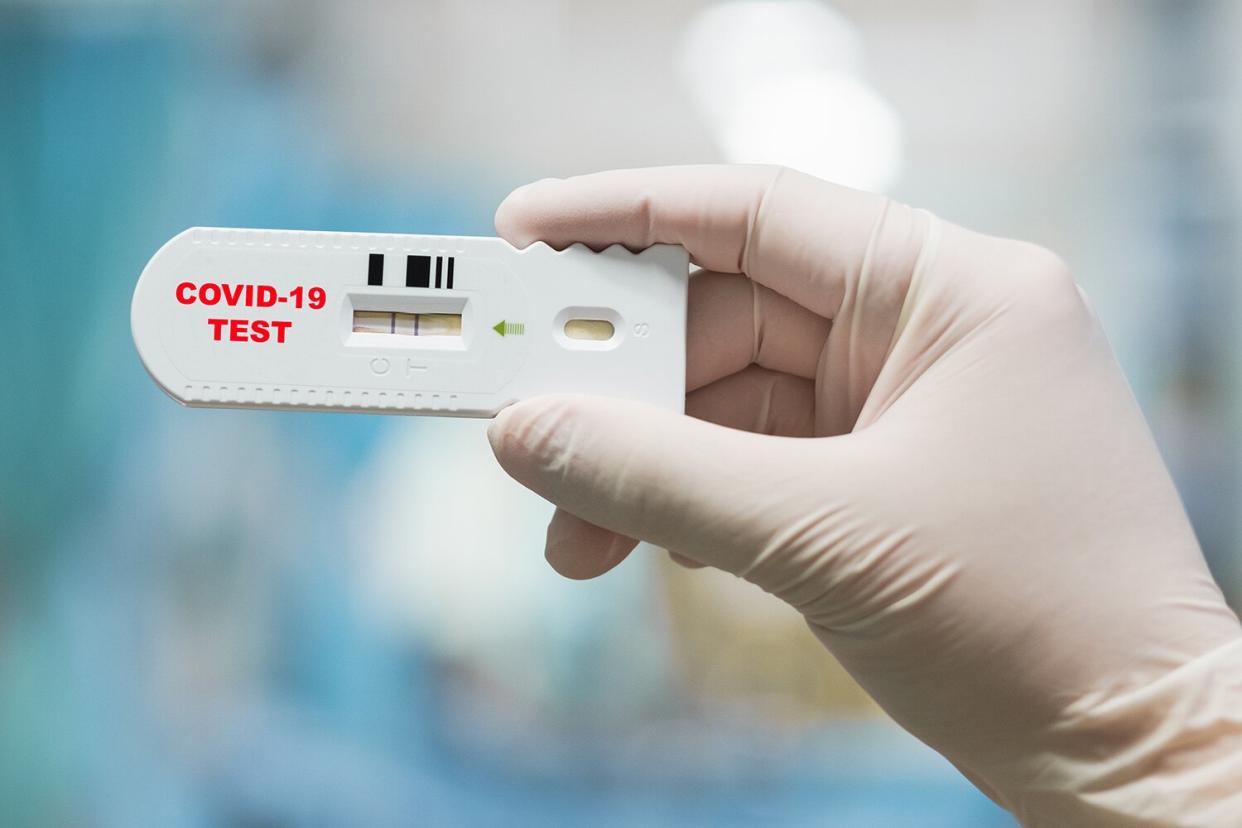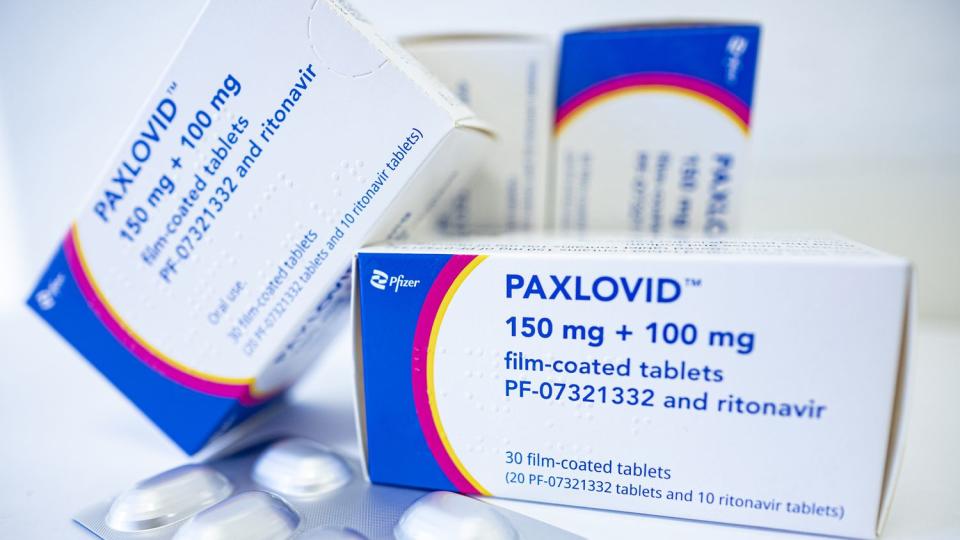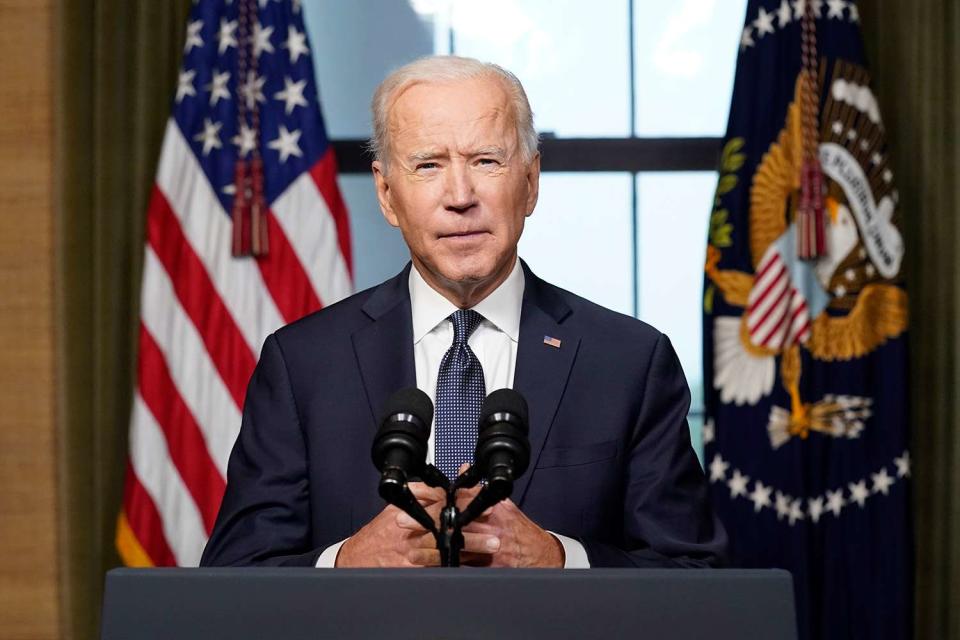What to Know About COVID-19 Rebound, Links to Paxlovid Following Joe Biden's Relapse

- Oops!Something went wrong.Please try again later.
Getty
President Joe Biden's recent health relapse has raised some questions about COVID-19 rebound.
After first testing positive for the coronavirus on Thursday, July 21, Biden, 79, began a Paxlovid treatment and started testing negative again on Tuesday evening. The White House later revealed that he tested positive again on Saturday in what has become known as a rebound case.
In a statement on Sunday, the president's physician, Dr. Kevin C. O'Connor, noted that Biden "continues to feel well" while still testing positive. He will continue conducting business while remaining under "strict isolation."
RELATED: President Joe Biden Tests Positive for COVID for the Second Time in a Month
The Biden administration has previously recommended the use of Paxlovid, of which more than 3 million courses have been administered in the United States since December, according to the Department of Health and Human Services.
The Food and Drug Administration approved Paxlovid for emergency use in December after it was proven to reduce the risk of hospitalization or death in high-risk adults by 89 percent. And although the treatment has been effective for many, some have reported rebound cases of COVID-19 after taking the antiviral.
As Biden continues to recover, here are some important facts to know about COVID-19 rebound.
Folks, today I tested positive for COVID again.
This happens with a small minority of folks.
I’ve got no symptoms but I am going to isolate for the safety of everyone around me.
I’m still at work, and will be back on the road soon.— President Biden (@POTUS) July 30, 2022
What is COVID-19 rebound?
Back in May, the Centers for Disease Control and Prevention (CDC) released guidance on COVID-19 rebound, which is described as "a recurrence of symptoms or a new positive viral test after having tested negative."
Rebound cases have been reported in patients between two to eight days after their initial recovery, and symptoms continue to be mild in those who have completed Paxlovid treatment.
"Based on information from the case reports, COVID-19 rebound did not represent reinfection with SARS-CoV-2 or the development of resistance to Paxlovid," the guidance added.
RELATED: What to Know About Paxlovid, the Antiviral Drug That President Biden Is Taking for COVID
The CDC also reported that during the Paxlovid clinical trial, a small percentage of rebound cases were found in both those who were administered the drug and people who took the placebo, meaning rebound does not appear to be caused by the antiviral.
"There was no increased occurrence of hospitalization or death, and there was no evidence that the rebound in detectable viral RNA was the result of SARS-CoV-2 resistance to Paxlovid," the report added.

Fabian Sommer/picture alliance via Getty Images
How common are COVID-19 rebound cases?
Although rebound cases have been reported to be rare, some medical experts say they're more common than originally thought, according to The Washington Post.
Catherine Bennett, a professor of epidemiology at Deakin University in Australia, told the outlet that rebound cases are "not rare, but uncommon," as they've occurred with around 10 percent of people who've been treated with Paxlovid.
Never miss a story — sign up for PEOPLE's free daily newsletter to stay up-to-date on the best of what PEOPLE has to offer, from juicy celebrity news to compelling human interest stories.
In a study published last month in Clinical Infectious Diseases, researchers from the University of California San Diego School of Medicine found that rebound cases in Paxlovid users appeared to be due to insufficient exposure to the drug, meaning that higher dosages or longer treatment durations could be necessary pending further research.
Is COVID-19 rebound contagious?
Dr. Michael Charness of the Veterans Administration Medical Center in Boston told CNN that those who experience rebound COVID are "at risk of transmitting to other people, even though they're outside what people accept as the usual window for being able to transmit."
Charness previously worked with a team of researchers at Columbia University that found at least two instances of patients with COVID-19 rebound transmitting the infection to others, even before symptoms returned.

Andrew Harnik-Pool/Getty
"It's certainly conceivable that there are other people out there who don't have symptoms and still have a viral rebound," Charness added.
Although transmission of infection during rebound cases has been reported, CDC notes that "it remains unknown whether the likelihood of transmission during rebound differs from the likelihood of transmission during the initial infection."
What treatment do COVID-19 rebound cases require?
Those with rebound cases should continue to follow the CDC's isolation guidelines for at least five days, after which they can end quarantine if symptoms are improving and they've gone 24 hours without a fever (and without the help of fever-reducing medication).
RELATED VIDEO: FDA Authorizes Pharmacists to Prescribe Pfizer's COVID-19 Antiviral Pill
Patients should also continue to wear a mask for 10 days after rebound, CDC stated. If symptoms worsen, they are advised to see their doctor.
"There is currently no evidence that additional treatment is needed with Paxlovid or other anti-SARS-CoV-2 therapies in cases where COVID-19 rebound is suspected," the CDC noted in their guidance while stressing that the drug is still "recommended for early-stage treatment of mild to moderate COVID-19 among persons at high risk for progression to severe disease."

